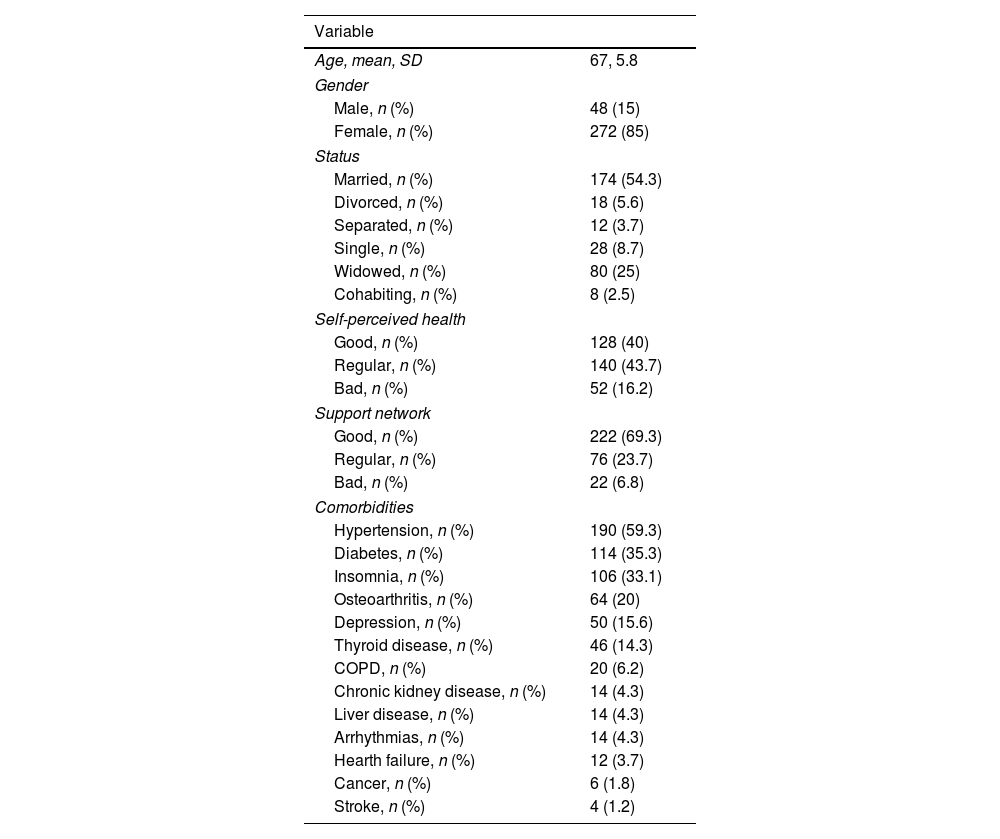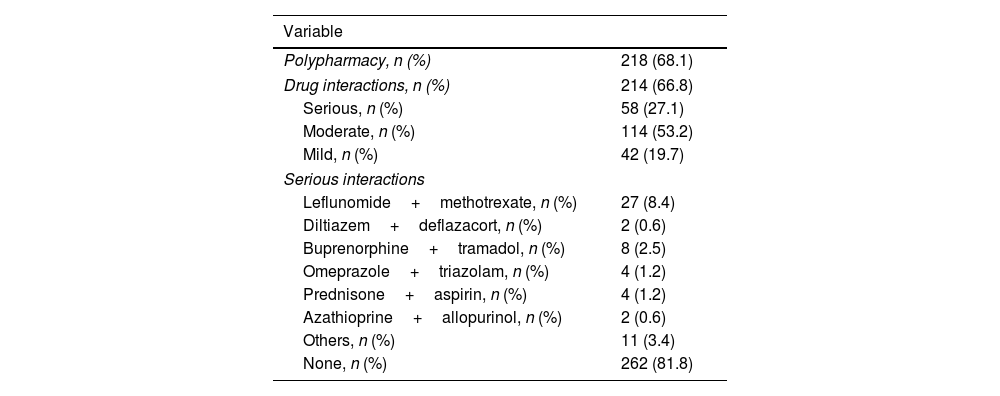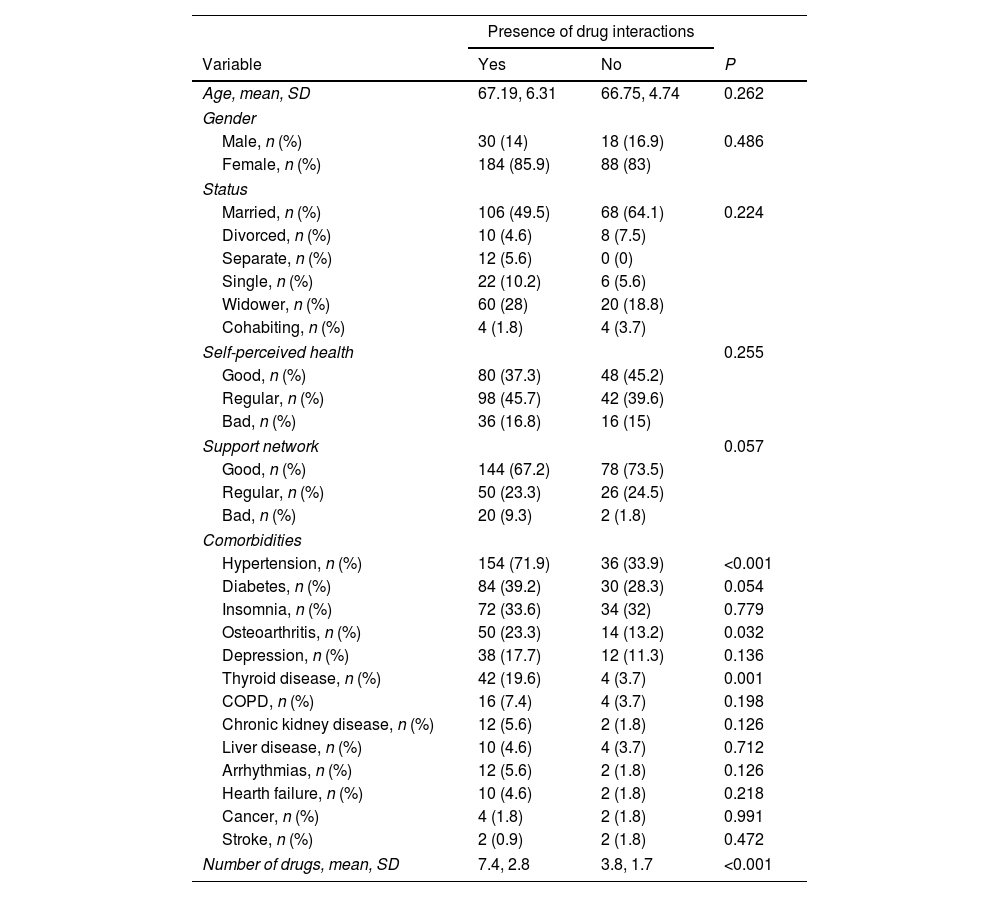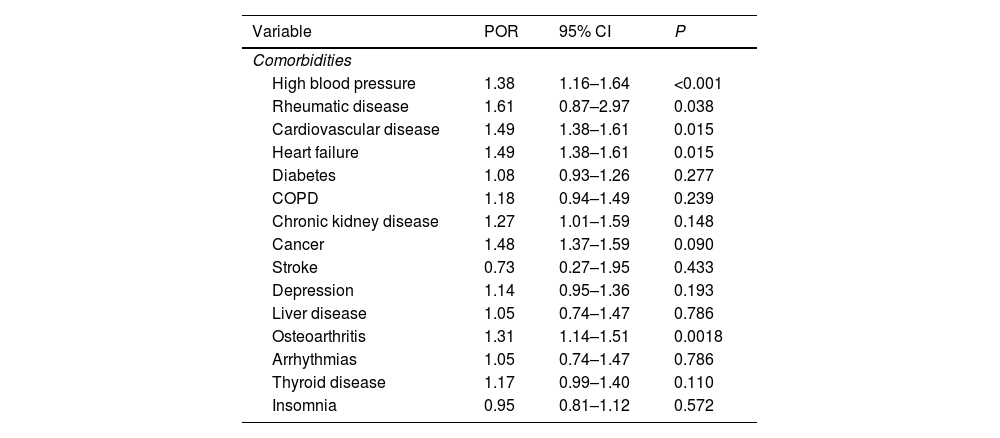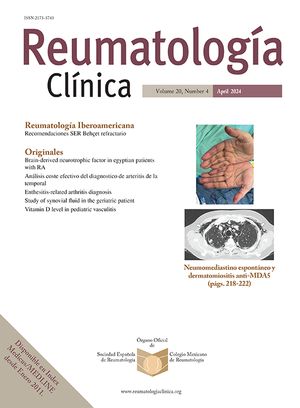Older people with rheumatic diseases tend to have a greater number of associated comorbidities, which will require the use of more drugs, increasing the risk of hospitalizations, complications, and drug interactions. In Mexico, there has been an estimated prevalence of polypharmacy of up to 55%, however there are scarce reports on the topic in our elderly population with rheumatic diseases. We aimed to determine the prevalence of polypharmacy and the association of drug interactions in patients treated for rheumatic disease.
MethodsA retrospective observational study was conducted on patients undergoing treatment for rheumatic diseases who were treated in geriatrics and rheumatology clinics from January to December 2021. The presence of polypharmacy and drug interactions was evaluated using the BOT Plus Pharmacological Surveillance System. The prevalence of polypharmacy and the association of drug interactions were estimated.
ResultsWe evaluated 320 patients, with a mean age of 67.05±5.8 years, predominantly female (85%). The prevalence of polypharmacy was 68.1% (n=218), of which 214 (98.1%) patients had related drug interactions; 27.1% were severe and 53.2% as moderate interactions. Factors related with increased risk of drug interactions were being exposed to hypertension increased the risk of drug interactions (POR 1.75, 95% CI 1.44–2.14; P<0.001), having osteoarthritis (POR 1.21, 95% CI 1.04–1.42; P=0.032) and thyroid disease (POR 1.45, 95% CI 1.28–1.65; P=0.001). The most prevalent serious interactions were leflunomide–methotrexate in 27 (46.5%) patients and buprenorphine–tramadol in 8 (13.7%).
ConclusionsA high prevalence of polypharmacy and drug interactions was observed in elderly patients with rheumatic diseases. The main associated factors were comorbidities, particularly high blood pressure, osteoarthritis and thyroid diseases.
Las personas mayores con enfermedades reumáticas suelen presentar un mayor número de comorbilidades asociadas, que requerirán la utilización de más fármacos, aumentando el riesgo de hospitalizaciones, complicaciones e interacciones medicamentosas. En México se estima una prevalencia de polifarmacia de hasta un 55%; no obstante, existe escasa evidencia en nuestra población mayor con enfermedades reumáticas. Nuestro objetivo es establecer la prevalencia de polifarmacia y el riesgo de interacción medicamentosa en pacientes en tratamiento por enfermedad reumatoidea.
MétodosEstudio observacional y retrospectivo en pacientes en tratamiento de enfermedad reumatoidea que fueron atendidos en los servicios de geriatría y reumatología durante el periodo enero-diciembre de 2021; se evaluó la presencia de polifarmacia e interacciones medicamentosas utilizando el sistema de vigilancia farmacológica BOTplus; se estimó la prevalencia de polifarmacia y el riesgo de interacción medicamentosa.
ResultadosSe evaluó a 320 pacientes, con una media en edad de 67,05±5,83 años, predominando el género femenino en un 85%. La prevalencia de polifarmacia fue del 68,13% (n=218), de los cuales 214 (98,16%) pacientes presentaban interacciones medicamentosas: 58 fueron graves (27,1%) y 114 moderadas (53,12%); se encontró que el padecer hipertensión arterial sistémica aumenta 1,75 veces el riesgo de interacción medicamentosa (OR 1,75, IC95% 1,44-2,14, p=0,000). Las interacciones graves más prevalentes fueron leflunomida-metotrexato en 27 pacientes (46,55%) y buprenorfina-tramadol en 8 pacientes (13,79%). Así mismo, el presentar osteoartritis (OR 1,21, IC95% 1,04-1,42, p=0,032) y enfermedad tiroidea (OR 1,45, IC95% 1,28-1,65, p=0,001) aumentaron significativamente el riesgo de interacción medicamentosa.
ConclusionesSe observó una prevalencia elevada de polifarmacia e interacciones medicamentosas en personas mayores con enfermedades reumáticas. Los principales factores asociados fueron el tener comorbilidades, en particular hipertensión arterial sistémica, osteoartritis y enfermedades tiroideas.




